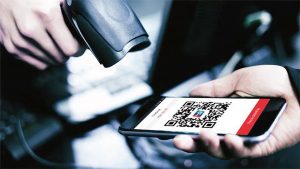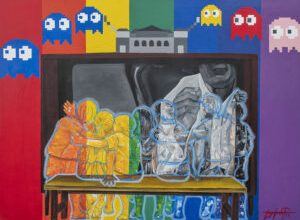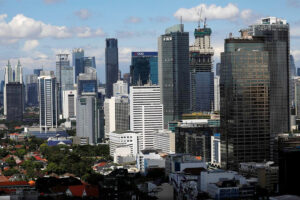Digital payments rose, made up 30.3% of retail transaction volume in 2021

DIGITAL PAYMENTS rose in terms of volume and value in 2021 as consumers and businesses used online channels amid mobility restrictions brought by the pandemic, the Bangko Sentral ng Pilipinas (BSP) said on Wednesday.
The share of digital payments in the total volume of retail transactions in the country rose to 30.3% in 2021 from 20.1% a year earlier, according to latest data from the BSP.
Meanwhile, the value of payments done online represented 44.1% of total retail transactions last year, higher than the 26.8% share in 2020.
“The latest results show we are closer to meeting our objective of converting at least 50% of retail payment transactions to digital form by the end of 2023, under the BSP Digital Payments Transformation Roadmap,” BSP Governor Felipe M. Medalla said in a statement.
Merchant payments, peer-to-peer (P2P) remittances and business transactions of salaries and wages to employees were the key contributors to the progress of digital payments, all of which are high-frequency, low-value retail transactions.
The volume of merchant payments grew by 43.8%, while P2P remittances rose by 268.6%.
Meanwhile, payments of salaries and wages to employees increased by 170.2% last year. This reflects the transition of businesses using digital channels such as electronic fund transfers to bank or e-money accounts.
The increase in electronic fund transfers could be seen as a result of expanding access to transaction accounts and the shifting preference of clients toward digital modes for payments, the BSP said.
The central bank also said that during the pandemic, clients who had financial accounts were able to safely and conveniently conduct digital transactions using their mobile devices in their homes.
“This capability for digital transactions should be within reach of every Filipino in our increasingly digital economy,” Mr. Medalla said.
“Hence, the BSP, with the support of the payments industry led by the Philippine Payments Management, Inc., continues to promote a vibrant and inclusive digital payments ecosystem where every Filipino can actively participate and enjoy its benefits,” the central bank chief added.
The BSP wants digital payments to make up 50% of all transactions both in volume and value by 2023.
The central bank also wants the country to become a cashless society by 2025.
In 2019, the central bank launched the national Quick Response (QR) Code Standard or QR Ph which has contributed towards the BSP’s financial inclusion goals. The facility is used for digital P2P transfers and person-to-merchant (P2M) payments through the InstaPay rail.
Under the BSP Circular No. 1055, the central bank required all participating payment service providers to adopt QR Ph for interoperability. As of April, there were 28 and 17 financial institutions participating in the P2P and P2M facilities, respectively. — Keisha B. Ta-asan




